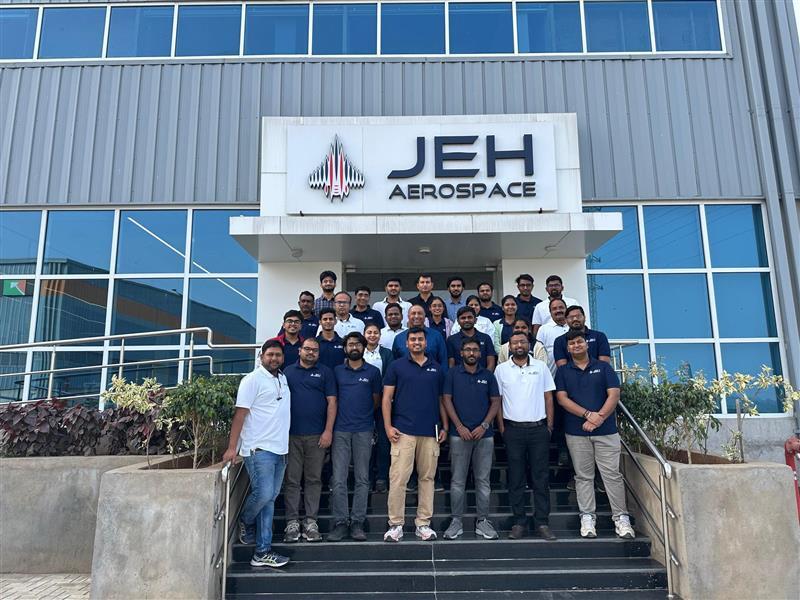With the Government’s newfound support for the private space technology microcosm in India in addition to the release of the new space technology reforms by ISRO, the space-tech sector is booming with potential and promise. Taking advantage of the momentum, the Hyderabad-based space tech company Skyroot Aerospace test-fired an upper-stage rocket engine, along with demonstrating India’s first 100% 3D-printed bipropellant liquid rocket engine injector named Kalam-5, the first of its five Kalam-series rocket engines which as compared to traditional manufacturing, reduced the overall mass of space vehicles by 50%.

The National Award winning startup was founded in 2018 by former ISRO scientists Pawan Kumar Chandana and Naga Bharath Daka, to build small satellite launch vehicles (SSLV) for small satellites and now boasts of being the first Indian company to successfully test fire an indigenous rocket engine. It develops launch vehicles (rockets) to provide affordable orbital launch service to the satellites of its customers where customers pay for this launch service in proportion to their satellite mass.
On December 22, The Kalam solid propulsion engine was first tested at Nagpur’s Solar Industries test facility. The ammunition manufacturer and defence contractor is a partner and investor in Skyroot along with Curefit cofounders Mukesh Bansal and Ankit Nagori apart from a few other angel investors.
“Kalam-5 uses 15 different advanced materials, nine different manufacturing processes, and has zero moving parts,” added Chandana, the CEO of Skyroot. A special feature of this is that it is built with advanced carbon composite structure in a completely automated process which is very challenging to design and manufacture but is five-times lighter than steel. “The test results closely matched our predictions and this success gives great confidence for our Vikram-I vehicle development,” he added.
A more advanced version will be built and tested at Indian Space Research Organisation (ISRO) facilities before powering its Vikram rocket by December 2021. “This is a subscale version of our third stage KALAM 100 motor. This demonstrates our solid propulsion tech and the same tech will be used in the three solid stages of Vikram 1 launch vehicle which will test-fired next year in ISRO facilities,” said Daka, cofounder and COO.
Chandana said, with this test along with the company’s Raman Engine test firing done in August 2020, Skyroot has demonstrated all propulsion technologies in Vikram-1 vehicles.With this, Skyroot unveils the first of five Kalam series of solid rocket motors with a thrust ranging from 5kN to 1000kN (~100 Tons). The remaining four motors are in various stages of manufacturing and will be tested in 2021.
Kalam-5 is a demonstrator solid rocket propulsion stage with exactly the same propellant, materials and interfaces as the three solid propulsion stages of Vikram-1 launch vehicle. It gives a peak sea level thrust of 5.3kN and is designed to take 66 atmospheres and 30000C of combustion pressure and temperature respectively. This is also 1:4 scale in size of our Vikram-1 3rd stage, he said.
Skyroot Aerospace and Bangalore-based Bellatrix Aerospace have signed a Memorandum of Understanding (MoU) to use the Orbital Transfer Vehicle that will act as a “taxi in space” being developed by Bellatrix Aerospace in the upper stage of Vikram series of launch vehicles being developed by Skyroot.
In an official statement, the two companies said, “In simple terms, it is like a taxi in space to take satellites to their operational orbits. Skyroot and Bellatrix plan to have the first mission of a Vikram with an Orbital Transfer Vehicle by 2023.” Its “taxi in space” launcher into the lower orbit of the Earth will allow small satellites to ride and drop each of them to their intended space slots to transport satellites, cargo or supplies into space.
Rohan Muralidhar, CEO of Bellatrix Aerospace said, “We are confident that this partnership will help us serve complex mission requirements and at the same time reduce the cost of access to space. The increasing demand for timely satellite constellation deployment in different orbits and on rideshare missions has not only made Orbital Transfer Vehicles (OTV) attractive, but also necessary. We are happy to announce that Bellatrix Aerospace is now developing a highly efficient and cost effective OTVs.”









